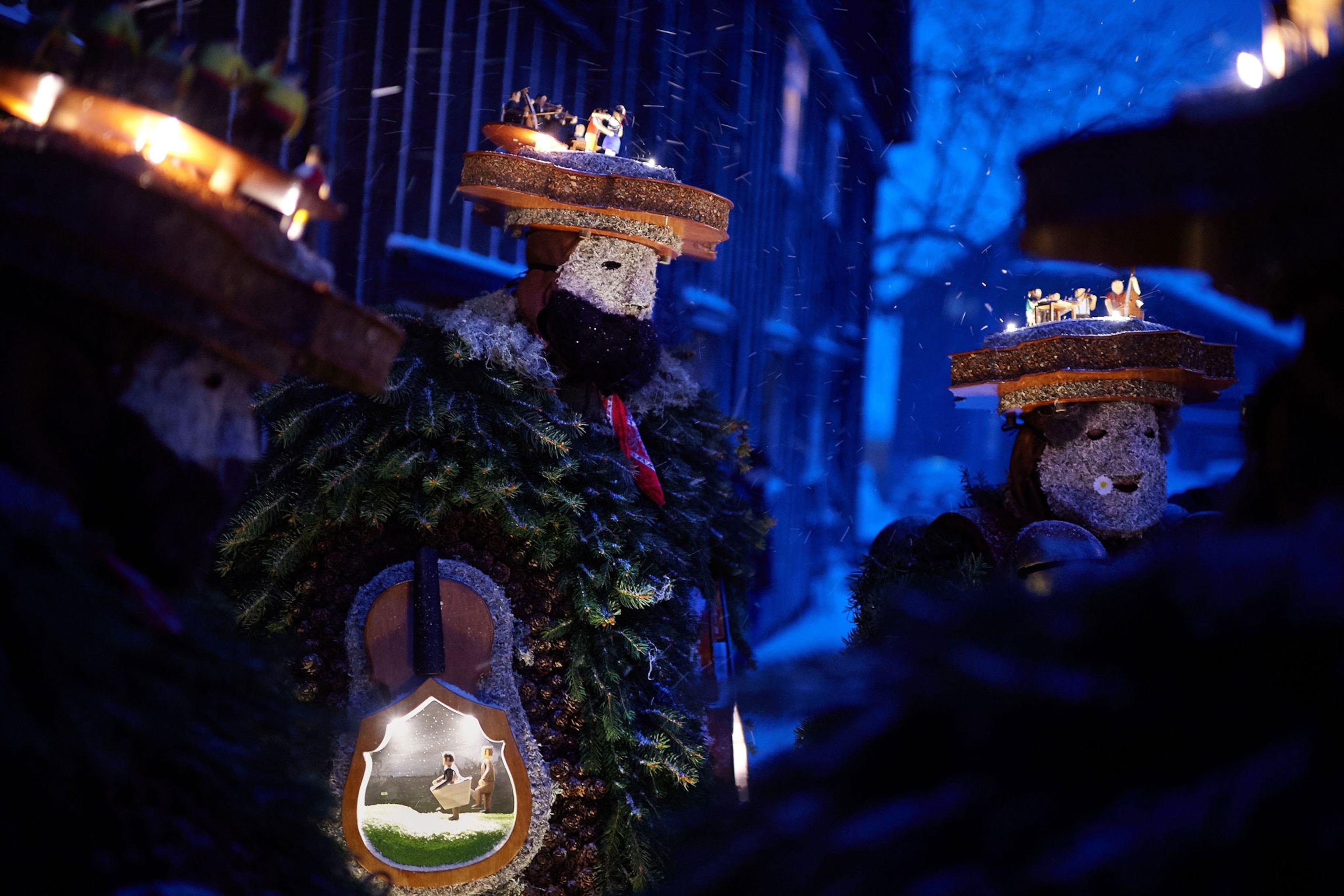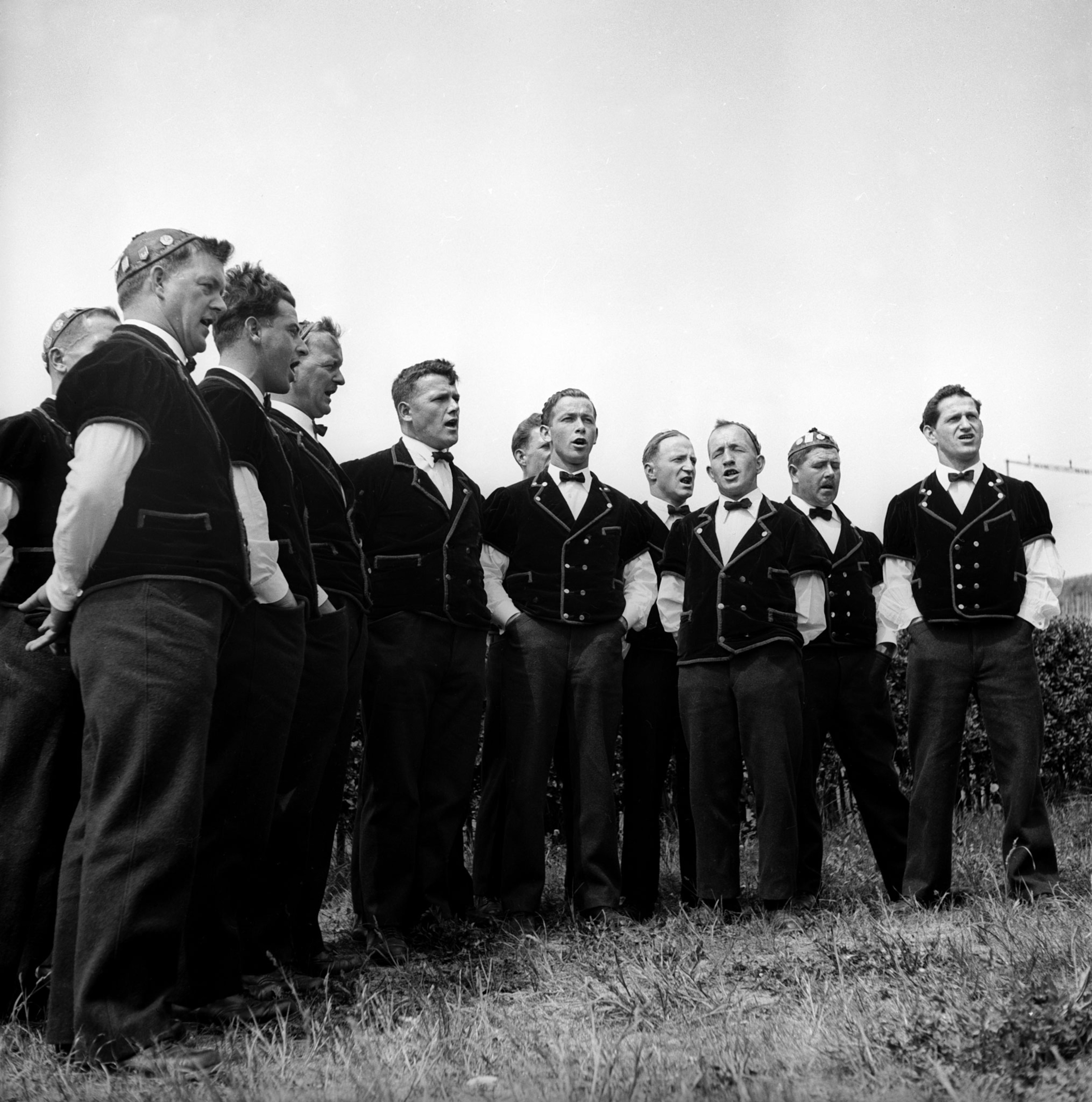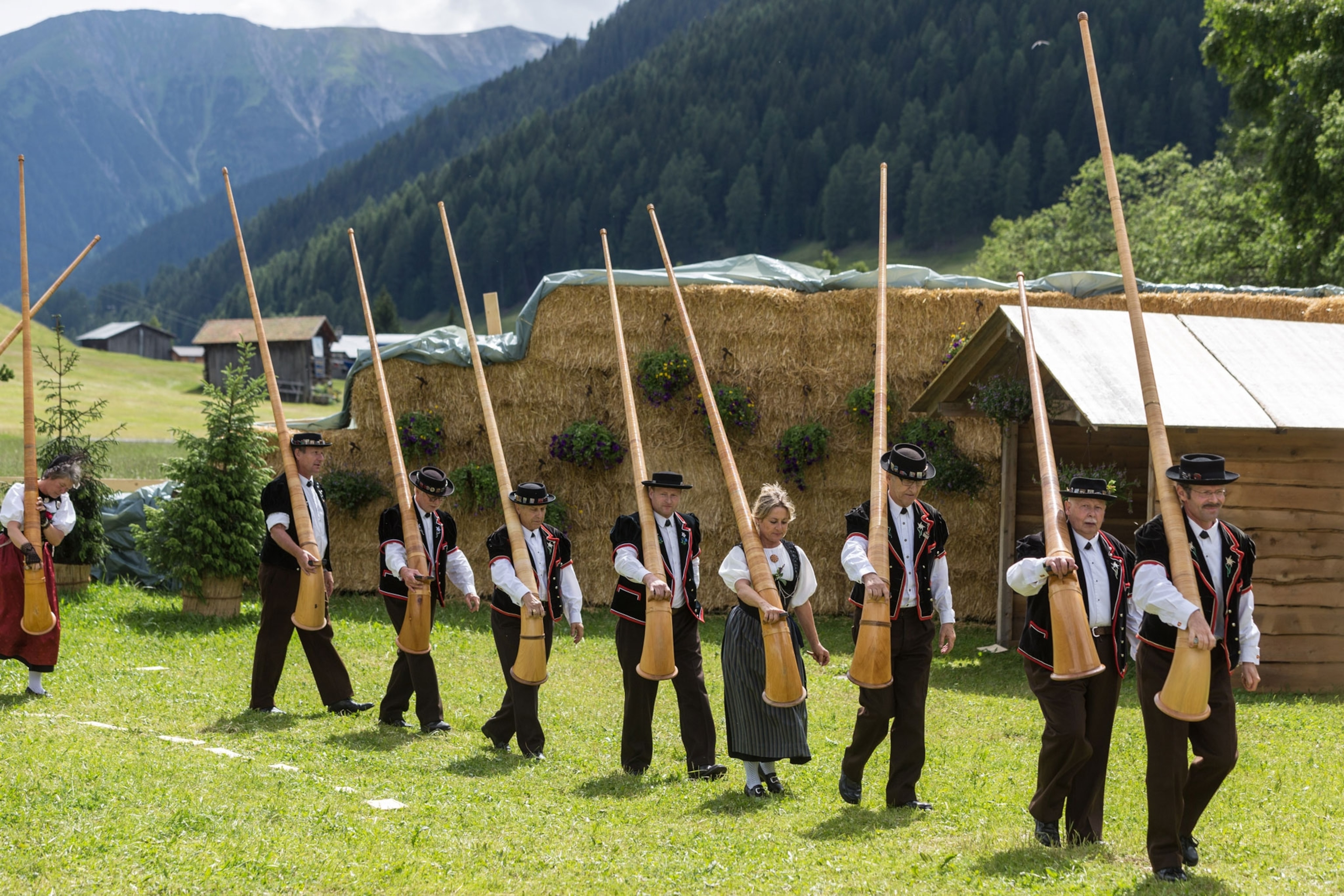
Switzerland’s yodeling tradition is changing. Here’s how to experience it.
The Swiss tradition has found its way into rebellious Eurovision pop songs and feminist choirs.
Yodeling has been practiced probably for as long as humans have expressed themselves through song. But the singing style synonymous with Switzerland and its Alpine neighbors hasn’t always been a crowd-pleaser.
In A Tramp Abroad, Mark Twain wrote, “During the remainder of the day, we hired the rest of the jodlers … not to jodl anymore.” Fellow 19th-century traveling man of letters Sir Walter Scott was even more scathing when, in an 1830 journal entry, he likened the sounds to “the tones of a jackass.”
Despite yodeling’s historical detractors (Roman Emperor Julian wasn’t a fan either), ancient forms can be found all around the world, from Scandinavian kulning to Iranian tahrir and Hawaiian leo ki‘eki‘e. In Switzerland today there are around 20,000 official federal yodeling society members, plus a triennial festival that draws up to 150,000 fans to enjoy competition in not just yodeling but also alphorn blowing and flag waving. It’s so ingrained in the culture that the government is seeking UNESCO cultural heritage status for it.
Yet as ubiquitous as it is, yodeling can’t seem to shake its bad rap. Even in Switzerland, some say the mostly male practice represents a bastion of traditionalism that needs to change with the times.
Is yodeling so hard to love, or is it just misunderstood? Is it destined for dusty music libraries, or will a new generation bring it into the modern age?
Yodeling history and misunderstandings
In pastoral times, the loud, rapidly trilling vocalization was a way for Swiss mountain herders to call their livestock or communicate between villages. In the 19th century it was a form of European music hall entertainment that traveled the globe, becoming popular particularly in the United States.
Nowadays there are essentially two forms of Swiss yodeling. The naturjodel is a wordless melody said to express the feelings of the mountain people in distinct regional dialects. The jodellied or “yodel song” is a more modern style influenced by 19th-century vocal aesthetics. Typically, it comprises a few stanzas of text about rustic-romantic things like mountains and flowers, followed by a trilling syllabic refrain. Deviation from these norms is generally frowned upon within the Swiss yodeling establishment, as embodied by the Eidgenössischer Jodlerverband (EJV), the federal yodeling association.

Dutch-American music writer Bart Plantenga is perhaps the world’s leading authority on yodeling. He has dedicated a large part of his life to seeking it out, including in Switzerland, which he hails as “a spiritual center for yodeling.” Plantenga stresses the importance of not letting preconceptions cloud people’s understanding of the art form. “A cultural prejudice has accumulated from clichés about what [yodeling] is,” he says. “No, it’s not just Switzerland and a couple of cowboys.”
In Plantenga’s view, scarcely a single style of music has been able to resist the intoxicating call of the yodel in one way or another. “It’s far more pervasive than people would probably realize,” he says, “demographically, geographically, and genre-wise.”
(South Korea’s K-pop cultural wave is on an unstoppable global rise.)
His writings trace yodeling’s roots and evolution from the Solomon Islands to Bollywood, from the Alps to Australia and Japan. Musicians as diverse as Gustav Mahler, Hank Williams, Jr., and Bob Dylan have been somehow influenced by yodeling. You can hear it today in Eurovision pop songs just as you can in “free” jazz. Plantenga points to “rebel” Swiss folk singer Christine Lauterburg as one example of a progressive approach to yodeling. Lauterburg’s fusion of yodeling and techno has been both critically acclaimed and decried.

Traditional yodeling, however, is much less visible outside of festivals and concerts. “There are some small regions in Switzerland where you can find people sitting in a restaurant and suddenly somebody starts to sing and everybody joins the singing,” says Nadja Räss, a renowned Swiss yodeler who has taught since 2018 at Lucerne University the world’s first academic degree in the song style. “I think 20 years ago, [that] was more normal. Nowadays, if you sing in a restaurant spontaneously, then the people look at you like ‘oh, is she drunk?’”
Räss emphasizes the importance of the social and communal aspect of yodeling—re-normalizing it in public spaces, for instance. She seeks to help students understand the tradition in its wider global context. “Yodeling is like a language you can understand everywhere in the world,” she says.
(Can songs save an endangered language?)
How yodeling is changing
So central do the Swiss consider the singing style to their cultural identity that the government is submitting it to UNESCO’s Intangible Cultural Heritage of Humanity list. By as soon as 2025, yodeling may be enshrined alongside the French baguette and the Congolese rumba as a protected tradition.
But how exactly do you etch in stone the definition of a folk art that has evolved so much and continues to change? It’s a question that speaks to an ongoing tug of war within the Swiss yodeling community, between those such as the EJV and others who believe in loosening the dirndl to allow individual creativity to flourish. “The idea of controlling what is your own folk music is utterly ridiculous,” argues Plantenga.
(Here’s how to explore Morocco through its soulful music traditions.)

Räss sees no shortage of passion and promise among yodelers from all ages and backgrounds. But she senses a desire among many to break free of existing structures and customs. As an example, she highlights Echo vom Eierstock, or “echo from the ovary,” a feminist choir on a mission to update outmoded male-centric yodel lyrics to reflect modern experiences, especially among women.
“For me, yodeling nowadays is very colorful,” Räss reflects. “It’s very important to have all these different styles beside each other.”
For 21-year-old Michèle Obrist, who belongs to the Echo Baarburg yodeling club in Zug, yodeling is a family tradition. Yet she believes that the idea that yodeling is only associated with men is a stereotype. “Traditions naturally face the challenge of dwindling participation as they tend to be more prevalent among older generations,” she says. “It’s understandable why a 15-year-old wouldn’t want to join a group where everyone is over 60 years old."
“However, there are numerous projects in the yodeling community that bring together many young people,” she continues. “And this is both important and encouraging.”
What to know
Swiss Federal Yodeling Festival Held once every three years, the world’s largest yodeling festival takes place in a different host city or town. The next one is set for Basel, in June 2026.
Natural yodeling in Appenzell The naturjodel is considered to be the most ancient form of Swiss yodeling, synonymous with the mountainous Appenzell region. The local tourism board lists demonstrations and workshops, plus places where you can practice your vocal acrobatics.
Echo vom Eierstock The feminist yodel choir performs often. Find details on their website.







